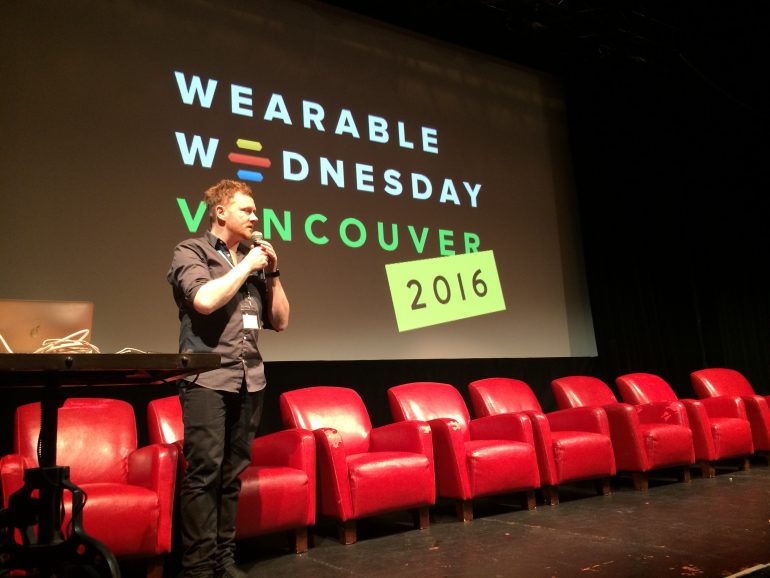Last week’s Wearable Wednesday event at the Imperial in Vancouver also marked the official relaunch of Wearable Wednesday in Canada. Eighteen other cities participated in wearable-themed events around the globe.
“The awareness and interest in wearables has increased exponentially in two years,” says Boris Mann, COO at Human, who hosted Wearable Wednesday twice back in 2014 alongside his CEO, Kharis O’Connell. The original events were smaller, they were higher level, and drew a more C-level audience. In 2016, the audience is much broader, covering varying professional levels and industries.
In the ever-changing world of technology, 2014 was a different time. The Apple watch and fitness bands were mostly what people thought of when they referred to wearables. Hardware technology was limited to laptops, tablets, and “smart” phones. Today in this sector, the industry is more focused on software over hardware, or in synergy between the two. The Hardware Row at Wearable Wednesday exemplified that shift. O’Connell said that “we’re at the point of sensor fusion, where a hardware product is a software product.” Wearables developers are also looking at a greater diversity of products, in industrial, healthcare and consumer spaces.
Edoardo Gallizio, the Product Marketing Manager for STMicro Semiconductors, said “the goal with wearable technology is seamless integration. It’s not smart because the battery lasts a week, it’s smart because it’s helping our lives. Technology needs to take action by itself, it needs to solve problems.”
Embedded predictive technology is affecting the user experience and development as well. ARROW’s General Manager for Western Canada, Tess Trethewey, pointed to the example of the Nike plus running app. “Why do you have to press that button? The accelerometer knows you’re running, it all exists already. Developers need to shift their mindset.”
The basics of how your wearable tech gets its battery power also came up in the discussion. Edoardo thinks “the need for data transmission compromises the need for energy harvesting. Rapid charging might be more valuable than energy harvesting.” He cited a study that was conducted on the consumer response to long-lasting battery life. The outcome: participants started to lose their chargers when the battery lasted 12 days. More frequent charging ensures wearables users don’t lose their chargers.
In between sessions, attendees spoke about Canada leading the world in developing wearable technology and Vancouver leading the world in sensor technology. We might be closer than we think to the “slight future” imagined in Her where technology recedes and dissolves into everyday life.


